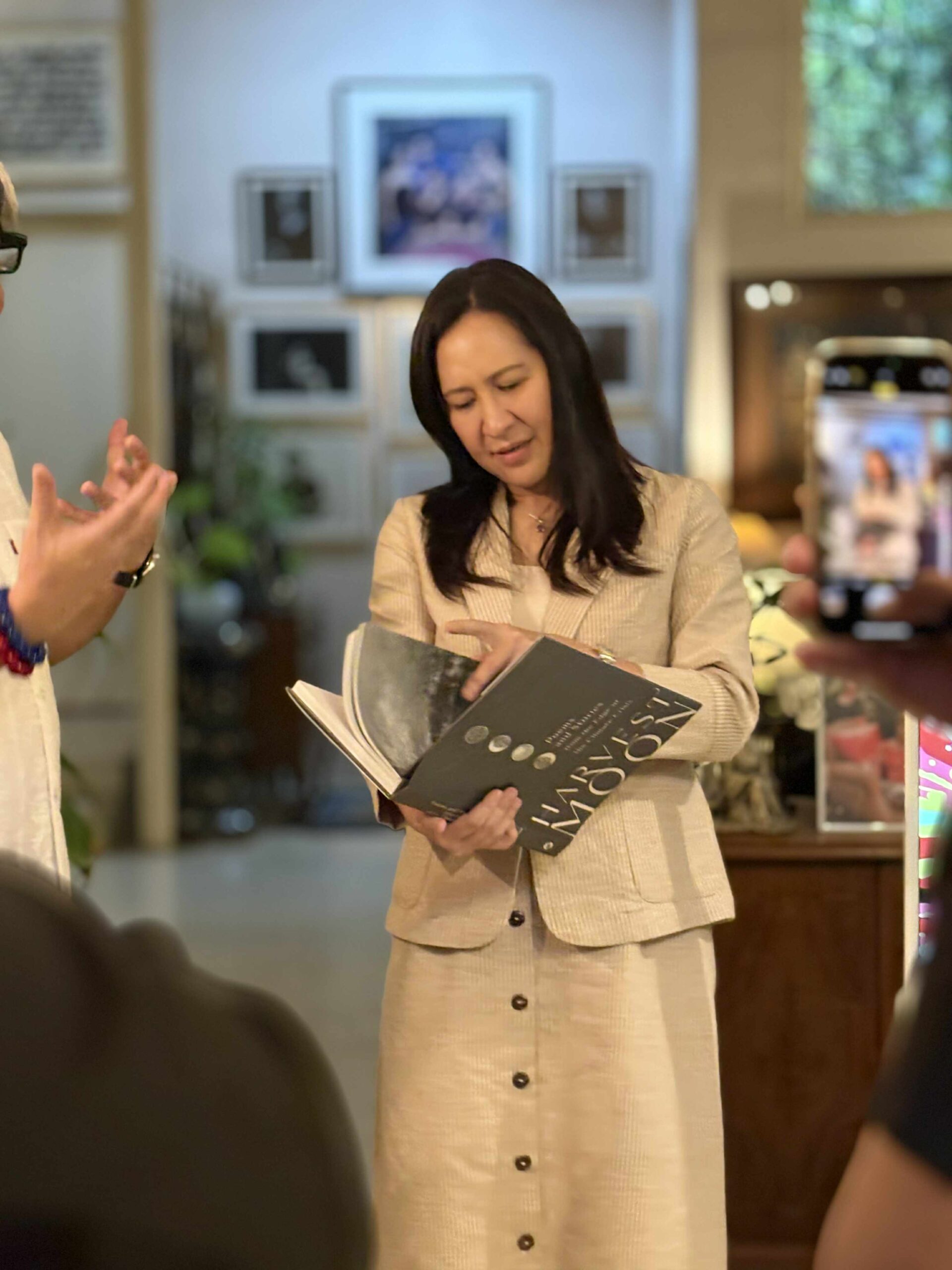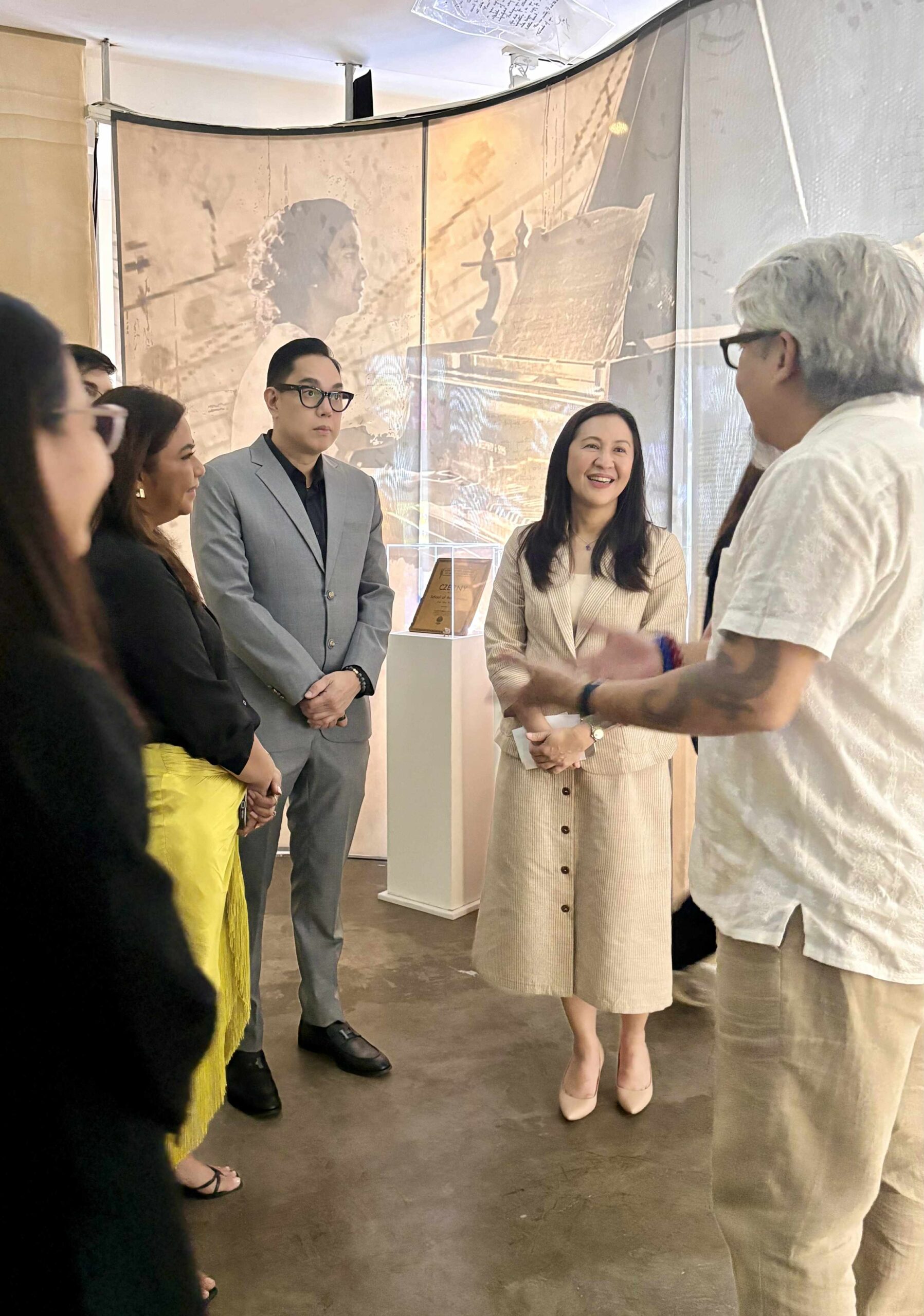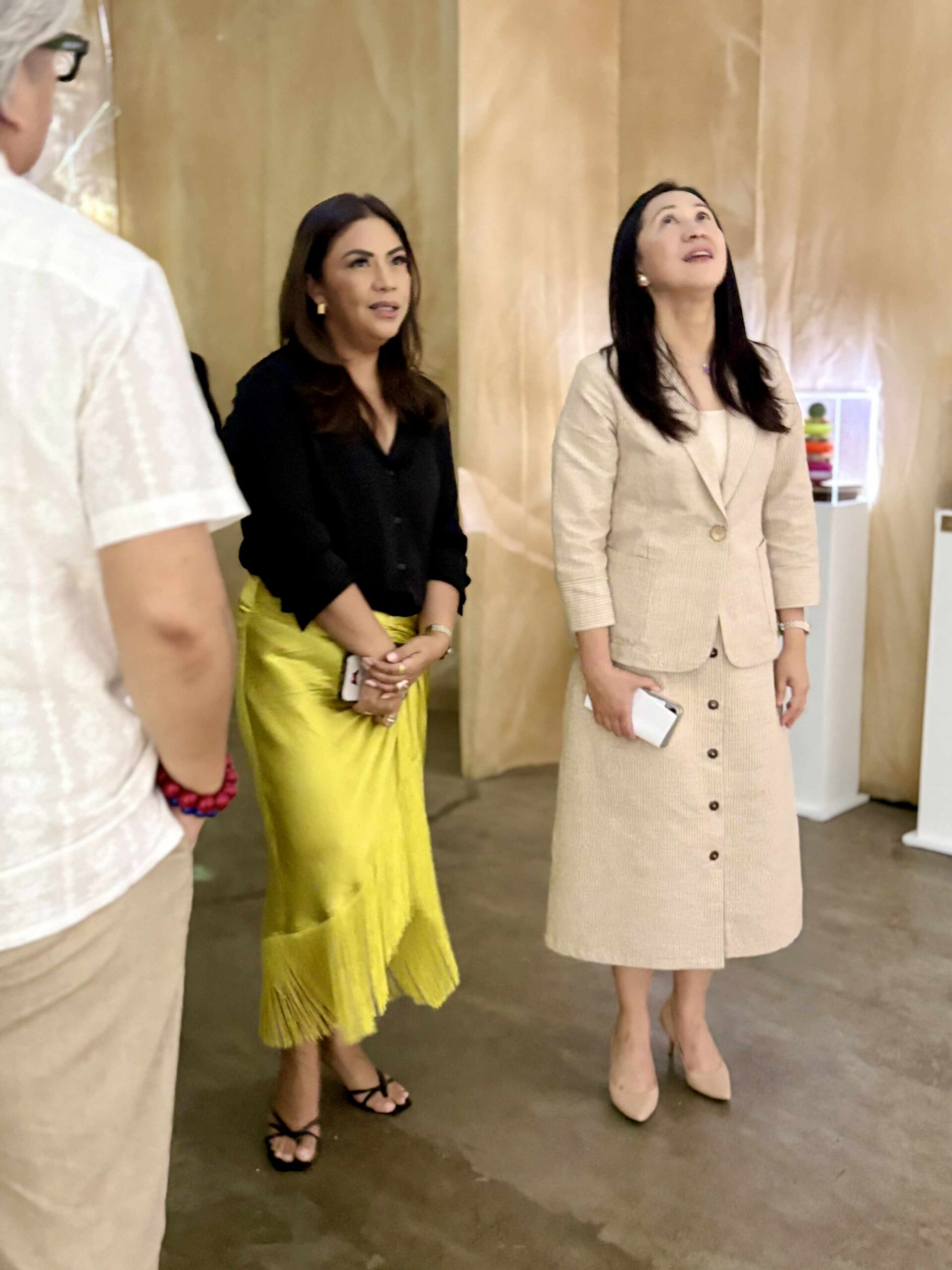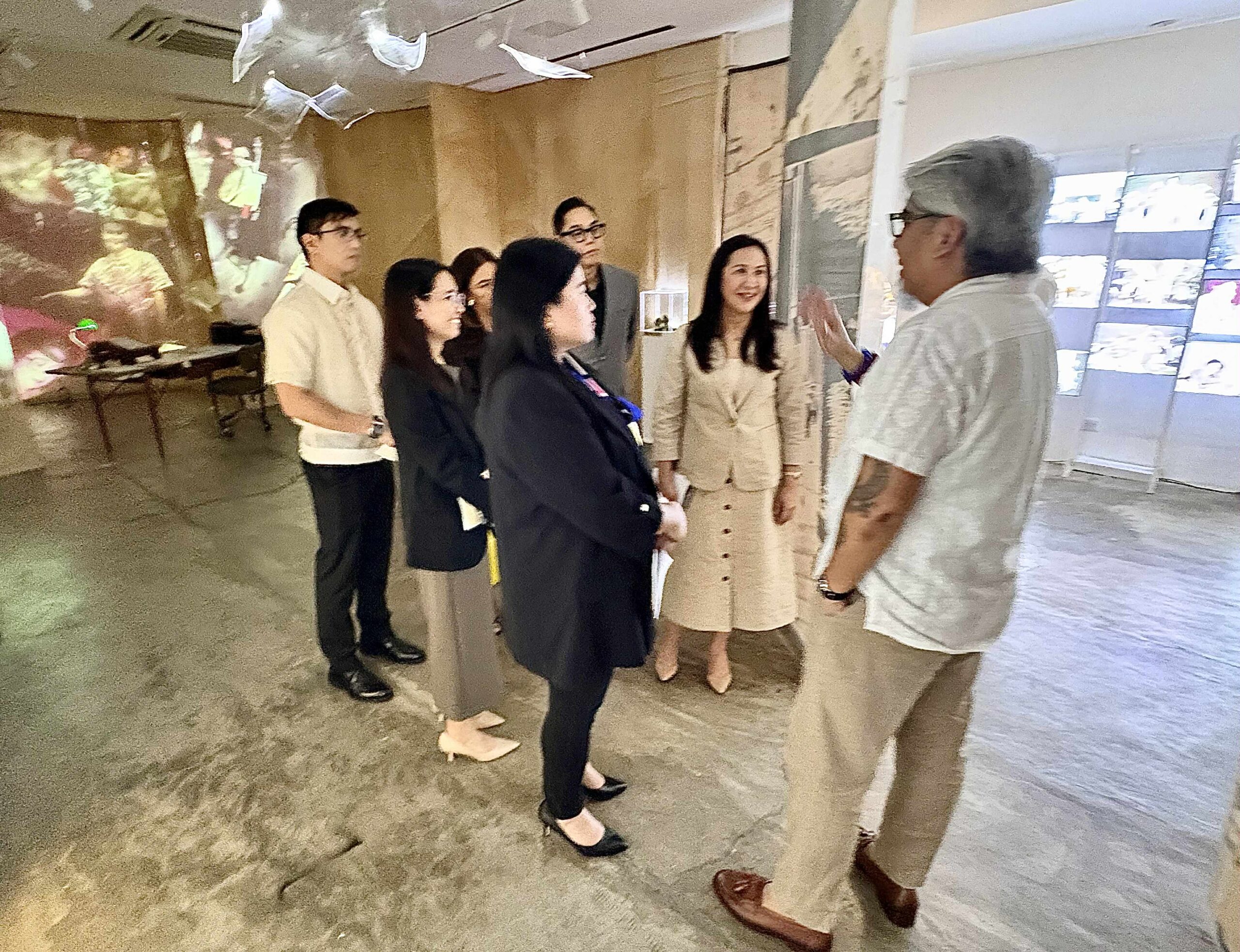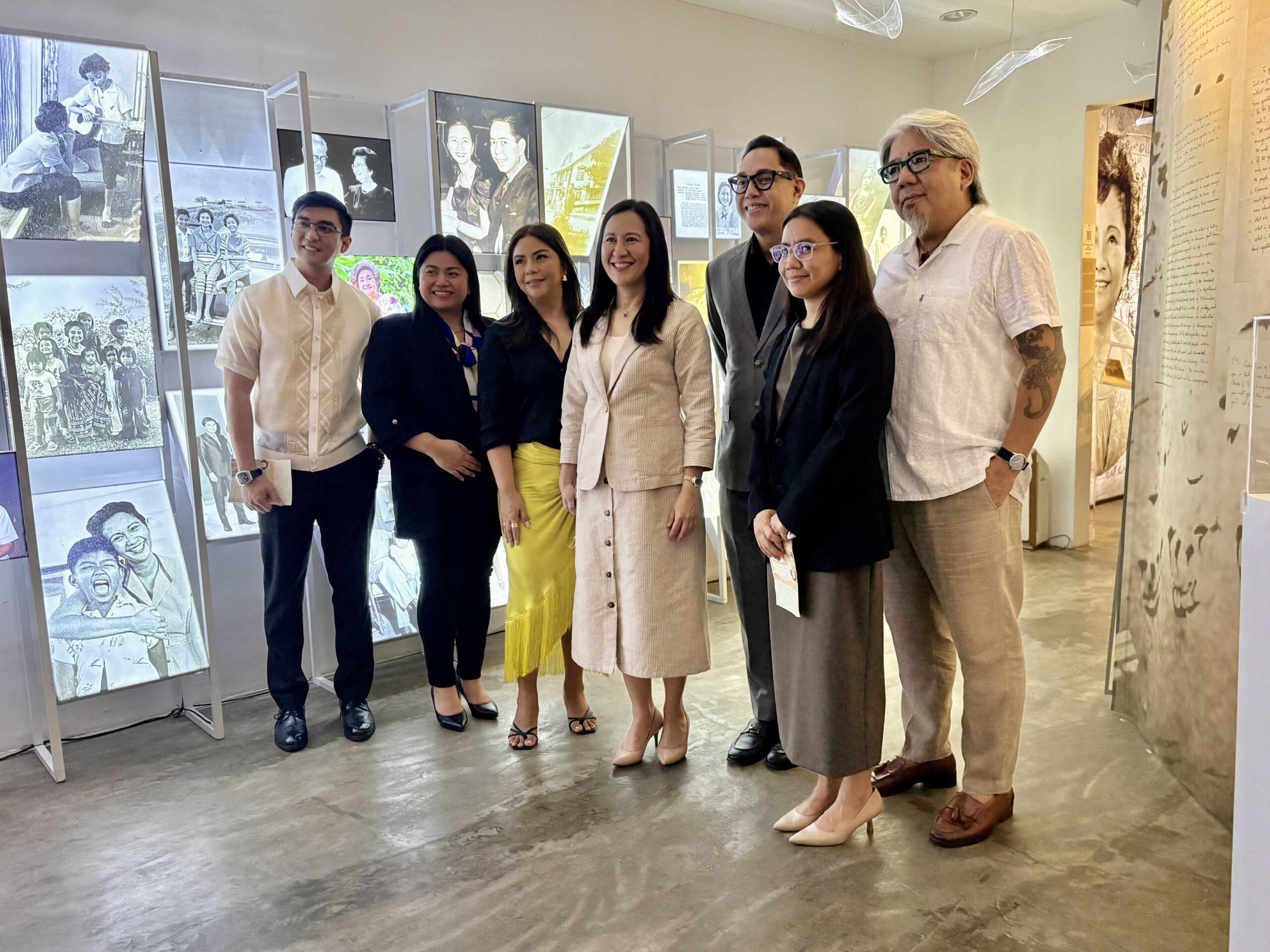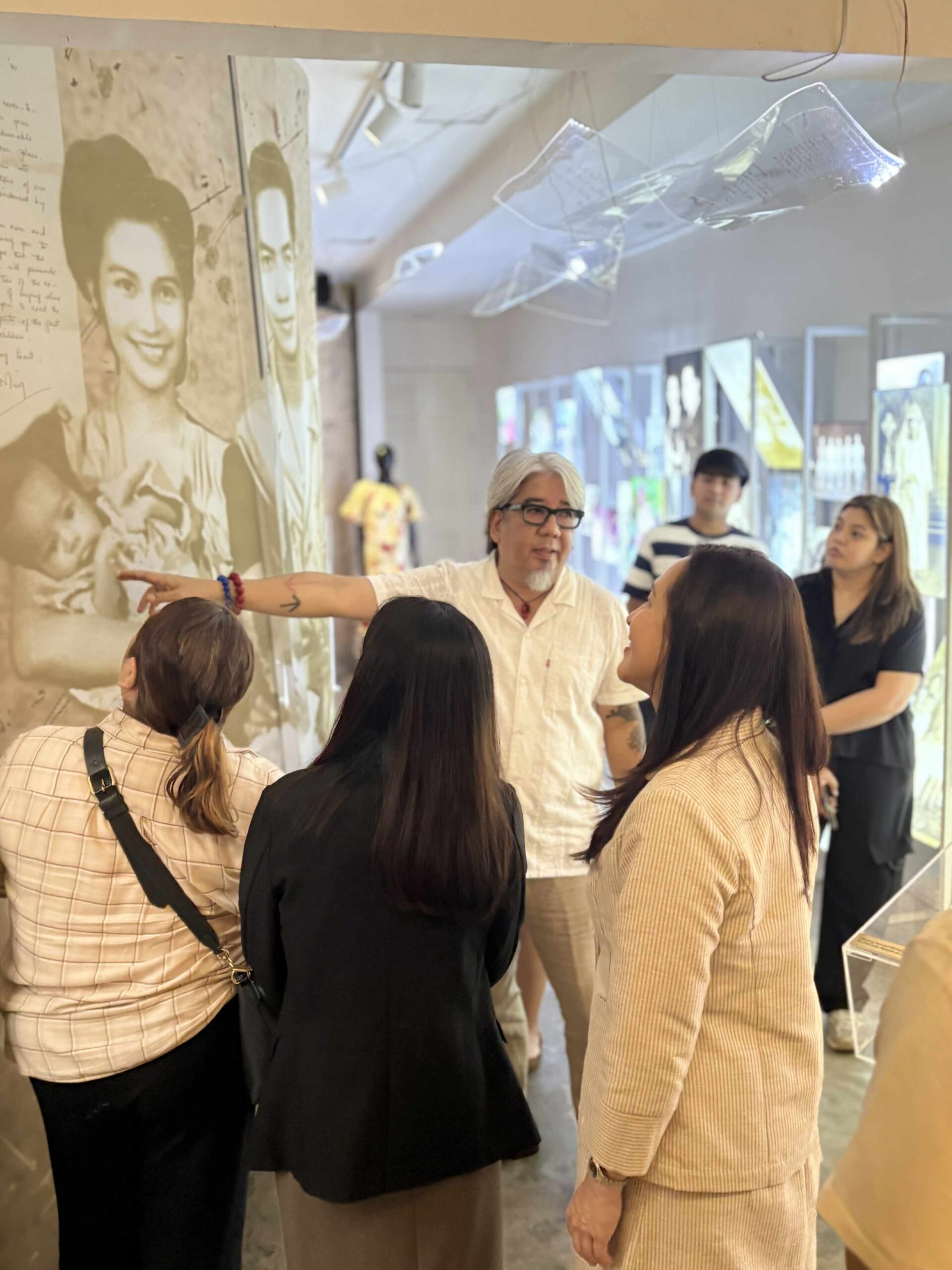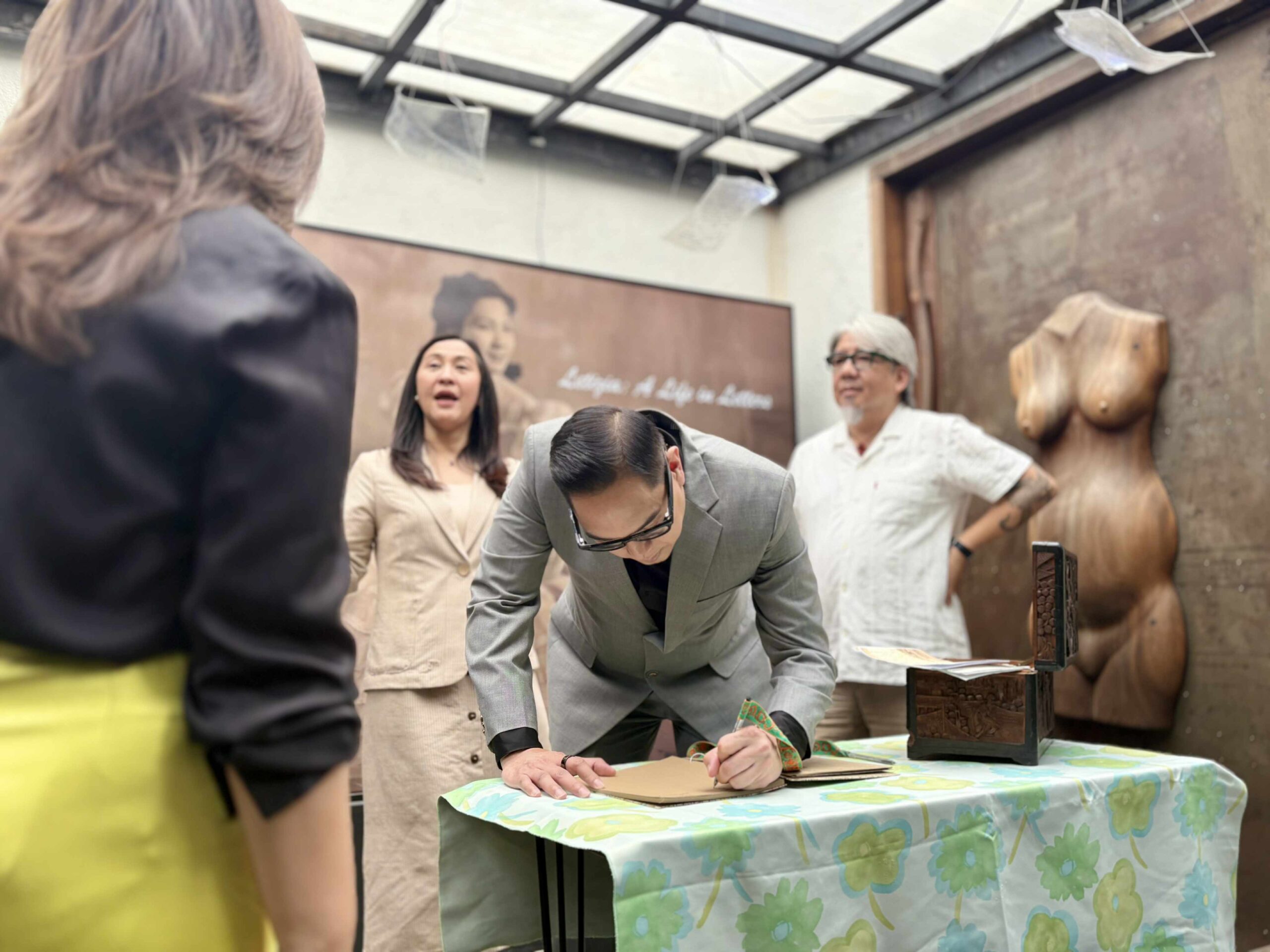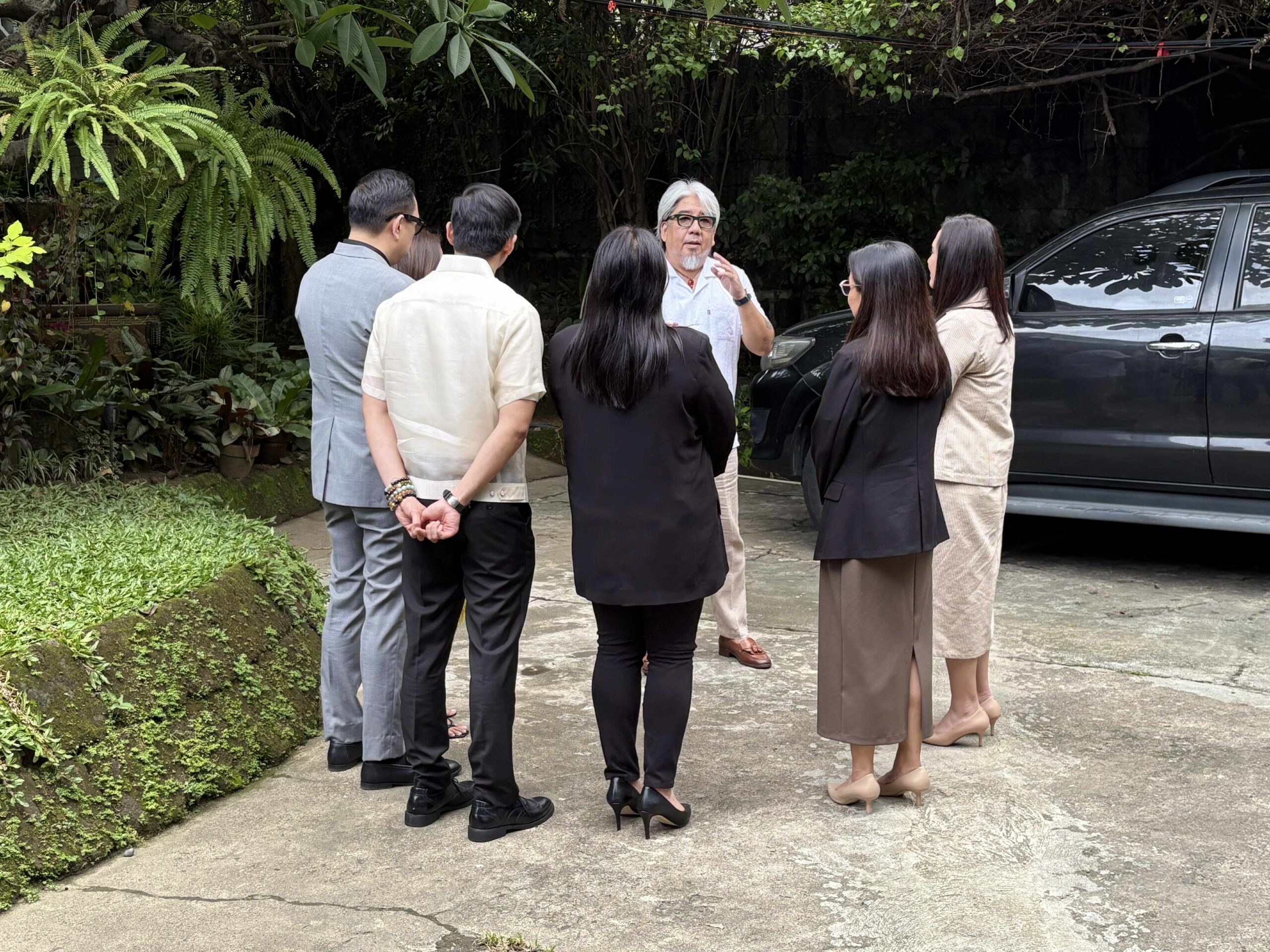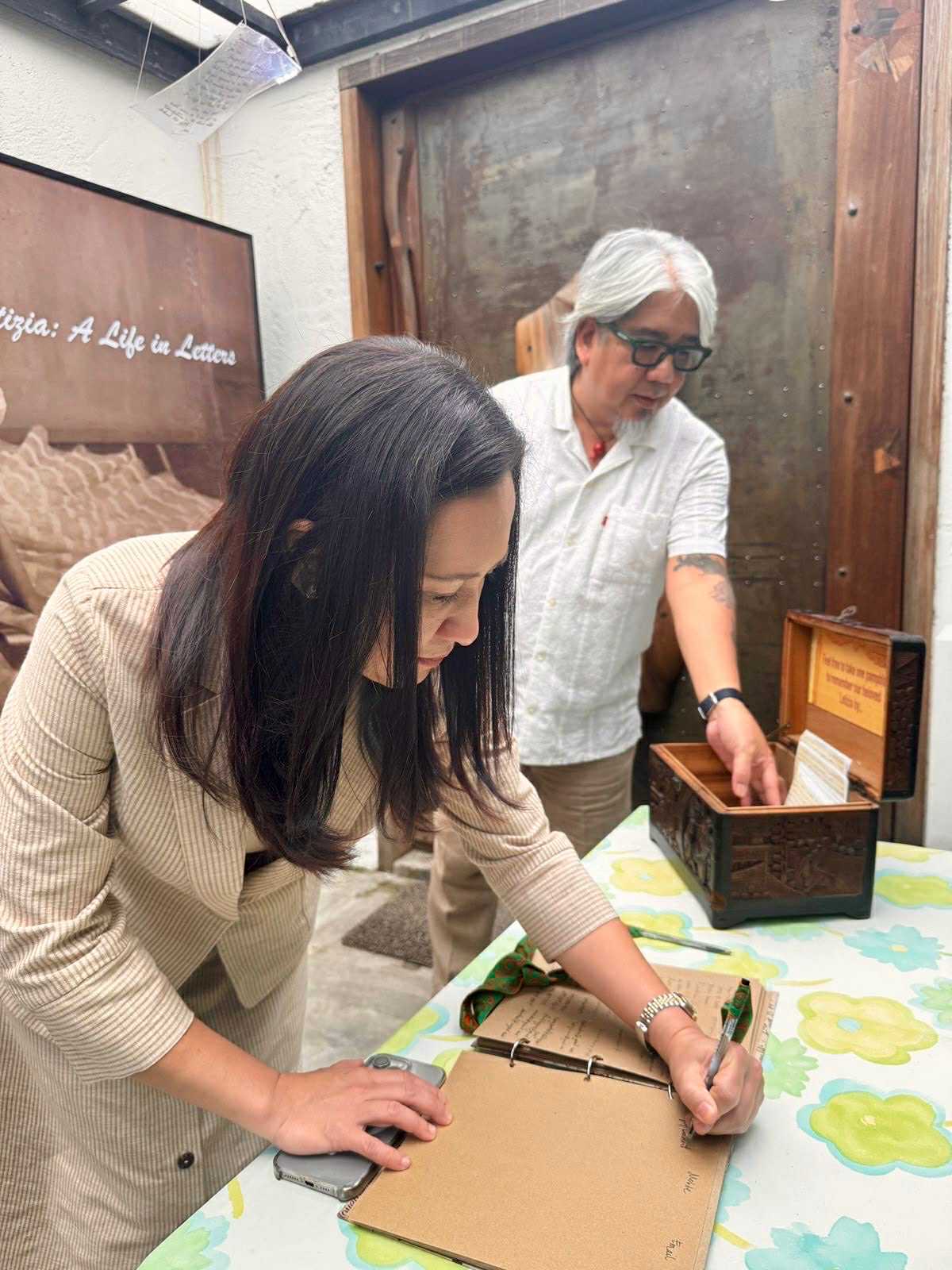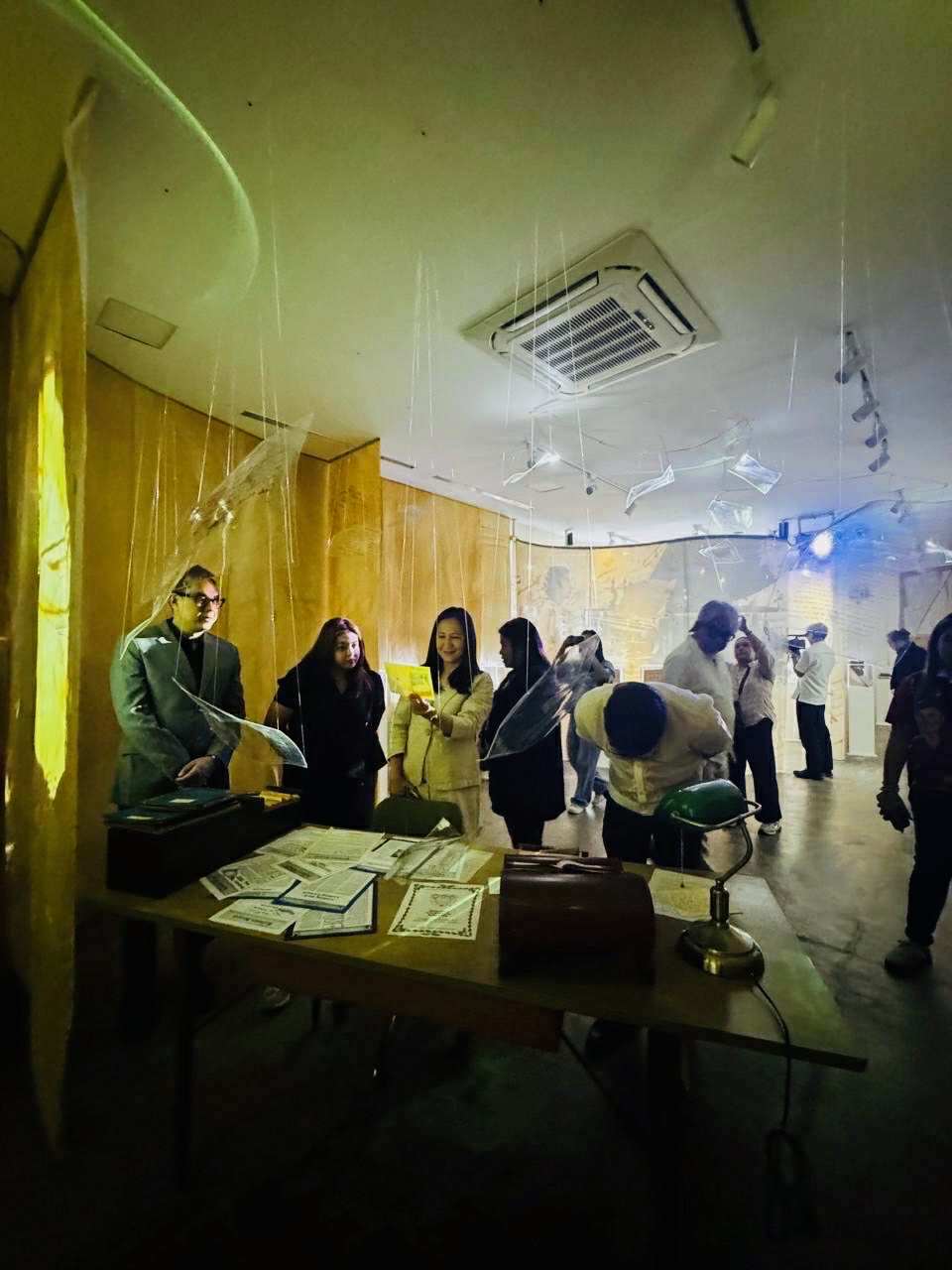It was a delightful Wednesday afternoon as the Constantino Foundation received the Quezon City Mayor Joy Belmonte and Councilors Wency Lagumbay, Doray Delarmente, and Atty. Tope Liquigan, the city’s tourism chief, Giana Barata, and around 15 other staff of the city.
The visit was filled with questions and expressions of wonder and surprise as the leadership of the city took their time to experience Letizia: A Life in Letters and get to know the generational Filipina named Letizia Roxas Constantino.
“Thank you for having us,” said Mayor Belmonte, “We truly enjoyed ourselves. The exhibit was very inspiring, beautifully presented and so insightful. We were all so impressed.” The mayor also offered an idea, which the foundation gladly accepted: “We hope we can use some of the material in our Women’s Museum.”
Now entering its fifth month, the exhibit opened in April and was scheduled to end on May 30. In response to persistent public requests, however, the foundation decided to extend the exhibit.
City officials came straight to the foundation’s Linangan Gallery right after the day’s legislative session had ended in city hall and they stayed for two hours. There was a lot to read and ponder on. Some lingered in the space where the piano and theatrical video was playing; others dwelled on the photographs and many stayed to read the letters on display.
Around 40 letters and diary entries were made public for the first time, distilled from thousands of artifacts from notebooks, ledgers, speeches, drafts, recipes, manuscripts, images, articles from newspapers and magazines, and countless documents, which actually represent a fraction of what remains unexamined inside the Constantino Foundation compound.
Later, with merienda served by the family matriarch Lourdes Constantino at the head of the table, discussions swirled around national politics, policy initiatives of Quezon City’s government on plastics, mobility, and culture, and plans were hatched to work together even more closely in the years ahead focused in particular on the promotion of poetry and the arts in the city as well as enhancing tourism.
Councilor Lagumbay articulated steps they were taking to address the challenges posed by plastics, clogged drains, and flooding; Councilor Liquigan spoke about art, and Councilor Delarmente shared tourism and education initiatives of the city. As for Mayor Joy, she was her usual self, easy to laugh and joking around freely about life’s foibles. Yet she was also most refreshingly candid about both difficulties and opportunities embedded in her work as the chief executive of a city with a population of over four million and counting. On her third and last term as mayor, she remains in dogged pursuit of a vision for Quezon City and her enthusiasm was infectious.
Throughout the warm and engaging conversations, the Constantino Foundation threw often what it felt was the one question that citizens of the city should also keep posing to the LGU’s leadership: where we can help? Saan pa po kami makakatulong? Because the business of governance is not really about business but about a sense of agency that actively seeks to contribute to common goals instead of merely waiting for officials to do something.

